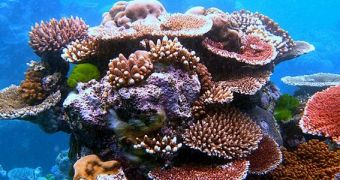A group of researchers from the Swansea University, in the UK, announce that the properties of sea corals are now refined and well-understood enough to start using the material more extensively in bone grafting procedures. In other words, corals can now be made to be compatible with natural human bones, opening the way for new medical advancements.
A paper detailing the research was published in the latest issue of IOP Publishing's journal Biomedical Materials. The team says that the key compound for the new material is derived from coral exoskeletons, and is called coralline hydroxyapatite (CHA). The stuff is then further processed to obtain coralline hydroxyapatite/calcium carbonate (CHACC).
The performances of the second chemical were then assessed in a clinical trial of 16 patients who underwent bone graft procedures, and outcomes were found to be improved significantly, e! Science News reports. CHACC allowed the bone graft to heal in just 4 months. Two years after the procedure, the chemical had fully biodegraded in patients' bodies.
“When biomaterials do not biodegrade and remain in skeletal tissue, they may continuously cause problems in the host. In extreme conditions, it is possible that the different mechanical properties of the artificial bone graft may cause a re-fracture or become a source for bacterium growth in infection,” says Swansea expert Zhidao Xia, adding that such an effect was not observed with the new technique.

 14 DAY TRIAL //
14 DAY TRIAL //